We’ve looked at the type of wood finishing products you need to make the best of older wood, stuff like old furniture and old wood floors. But what about new wood? What if you’ve just moved into a new house with brand spanking new skirting boards and nothing’s been painted yet? And what if you’ve just had new wood fitted in your home? Here’s some handy information about how to paint new wood.
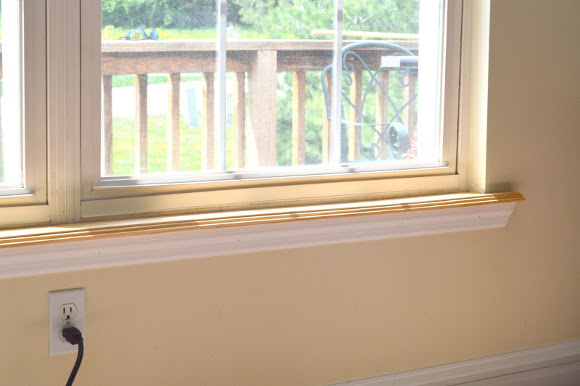
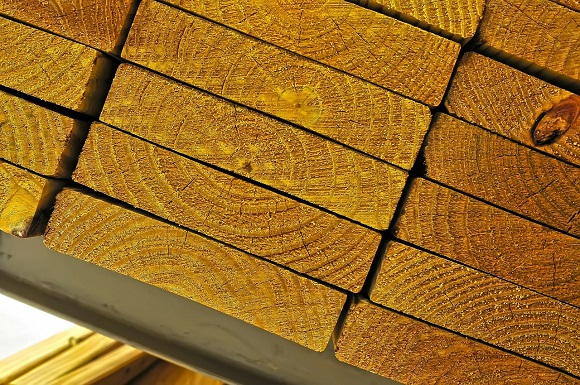
About painting new wood
Preparation is everything if you want new wood to last for a long time. Inside the home most new items tend to be made of softwood, including door frames, skirting boards, architraves and doors themselves. Exterior wood items are sometimes hardwood, sometimes softwood. Fascia boards, for example, are usually softwood, whereas exterior doors and windows are usually hardwood.
How to paint skirting boards – A knotty issue!
Painting skirting boards? Preparation is your first job whatever the type of wood. First, rub down the surface so it’s smooth and clean, with no splinters or rough bits. It’s easy to achieve when you sand with the grain of the wood, since sanding against the grain just leaves a fuzzy mess.
Pine can be particularly prone to rough, grainy areas as well as being packed full of knots, so sanding skirting boards is a particularly important step in your preparation.
Knots are important. Because the wood that knots are made of is a different texture and colour from the background wood, knots absorb wood finishes differently. If you try to paint a new, knotty pine skirting board the knots will show through your paint, staining it no matter how many coats you use and whether you use gloss or something water-based. Before you go anywhere near a can of paint, you need to carefully apply the right number of coats of knotting solution.
Knotting solution is usually applied using a brush or cloth, using at least 2-3 coats to completely cover the knot and prevent it staining the final paint finish. Once the knotting solution is dry, you can add your first coat of wood primer.
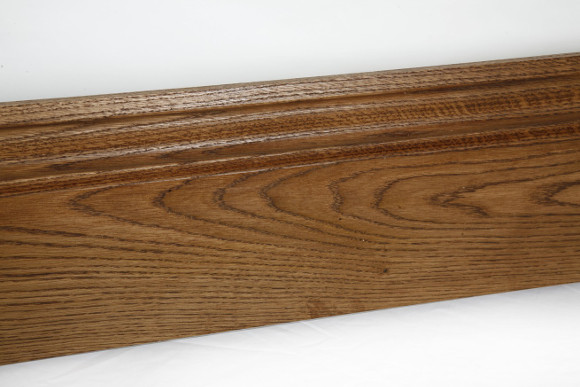
Prime your wood for a stunning final finish
Wood primer can be either water or solvent-based. Water-based primers are more common. They smell less as well as leaving your brushes easier to clean. Let the first coat dry completely then rub it down gently with fine grit sandpaper. Then add a second coat and again, rub it down. At this stage you’re getting there, having created a smooth, regular key on which to apply an undercoat.
Get busy with the undercoat
Undercoat makes it much easier to apply an even, good-looking gloss or satinwood topcoat. Apply one or two layers of undercoat depending on what the instructions say and how porous the wood is. Some undercoats are very dark, handy if your topcoat will also be a deep colour. A deep grey undercoat, for example, is perfect if you want to paint the wood in dark green, deep burgundy or black.
If you are applying more than one layer of undercoat, let it dry completely and give it a light sand before applying the second coat. When it’s all perfectly dry you’re ready to apply a topcoat, whether it’s a gloss paint, satinwood finish, eggshell, spirit-based metallic paint or some kind of emulsion. Alternatively you can use a product like Dulux Trade Satinwood, which doesn’t require an undercoat to be applied, except where a strong colour changed is required.
Do you have to use boring old gloss paint on your skirting boards?
There’s no need to stick with gloss for your skirting boards. While it might be traditional it can also be horrible stuff, sticky and smelly, and a challenge to apply unless you’re fairly fluent with a paintbrush. And there’s no reason why you should stick to white paint, either. While white gloss skirting boards look smart they’re a bit old fashioned – the current trend is to either paint your skirting in a contrasting colour to the walls or use the same colour, both of which make the ceiling look higher and the space much bigger. Imagine a stunning heritage duck egg blue wall with matching skirting boards. Wow – a contemporary interior design winner!
Using a coloured non-gloss finish like a water-based eggshell – which is also wonderfully easy to wipe clean – means you have to repaint and refresh it less frequently, simply because white gets grubby in no time while colours look good for longer.
To prepare for the topcoat, give the wood one last fine sand to create a good key for the paint. Then get rid of any dust. You may or may not need more than one coat, depending on the paint type you choose. If so, it’s vital to let the first coat dry properly first or you’ll make an awful mess of it. As a general rule, two coats deliver a better sheen and a deeper, fuller finish than one.
What about painting new hardwood?
To paint new hardwood the process is the same, but you might not need to use knotting solution since hardwoods have far fewer knots in the first place. Sand, prime, undercoat and topcoat in the same way as you would Pine, making sure to sand gently in between every coat for a super-smooth finish.
How to paint unfinished wood furniture in 7 steps
Unfinished wood furniture can be remarkably cheap and cheerful, whether you make it yourself or buy it ready made. It can look fabulous too, especially when you take it to a whole new place with a contemporary painted finish. Here’s how…
- Remove knobs, handles and any other metal or other hardware from the furniture to make it easier to reach the fiddly bits
- Sand the surface down. If it’s carved or intricate, using a flexible foam sanding pad helps you get into the nooks and crannies. Your ideal sandpaper is 220 grit
- If there are any knots, sand them flat so they don’t stand proud from the grain
- Hoover or dust the piece so it’s totally dust-free
- Seal the wood with a coat of primer to hide imperfections and give a good key for the topcoat to stick to. If the piece is carved, you can always use a spray primer for good coverage
- Top tip: Not sure if you want it glossy or matt? It’s easier to start with matt and go to gloss if you prefer it rather than starting with gloss then changing the finish to matt
- Apply a minimum of 2 coats of topcoat and you’re done
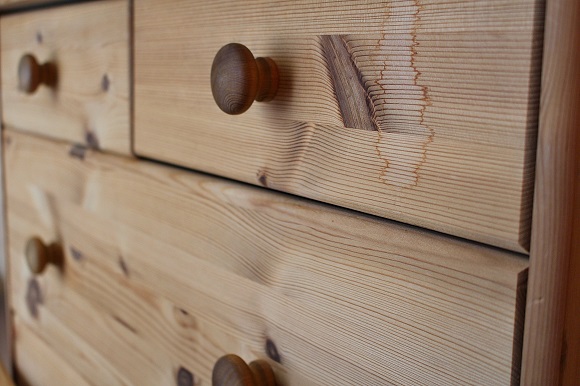
Of course you can also re-finish old wooden furniture to give your home a brand new look. If you’d like to see it in action, there’s a great video revealing how to create something fresh and attractive for next to no money. Here’s a link to How to Paint Wood Furniture.
A word about contemporary paint finishes…
Before you trot off to find your nearest wood paint stockist, here’s some creative interior décor inspiration. These days you can buy the most remarkable, beautiful and unusual wood paints. As well as choosing from literally 1000s of fantastic special-mix colours including subtle, high-fashion heritage shades and luminous colours, there’s a wealth of interesting textures to play with. Plus special opalescent paints, metallic paints and iridescent colours that shimmer and shine. In fact today’s trend for eclectic décor, country French style and shabby chic means more or less anything goes.
Need help with your wood painting project?
For more information about wood paints and their uses, contact our team of resident experts who are always on hand to help with project advice and product recommendations. Alternatively, see our wood paints FAQ page which covers many of the most commonly asked questions about wood paints.
We love to see before, during and after photos of any wood finishing project. If you would like to share your project pictures with us and our followers, you can either send us some photos or share on our Facebook, Twitter, Pinterest or Instagram pages.


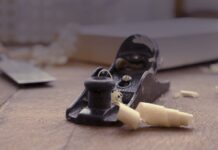


Hi im doing a project and im not sure if softwood can be paint and I doesn’t know which paint can protect the wood. I just wanted to find a paint that can keep out the water from going into the wood.
Good Afternoon Kevin,
Thank you for getting in touch with your enquiry. I would need to know a little more about your project before I can advice on products you can look at. Is it interior or exterior? what is the project, furniture, decking, flooring or something else?
I look forward to hearing from you.
Kind Regards Samantha.
We have just had a loft conversion done , so we have a lot of wood to paint or stain. Do we need to use a knotting solution for the bits of wood we intend to stain? And if so wont the solution show through leaving dark patches? Any help would be appreciated.
Good Afternoon Mark,
Is the wood new or original to the loft. If the wood is fairly aged then there may be less chance of resins leeching out, wiping over the knots with Methylated spirits to draw out any from the surface and remove any resins before application of a treatment.
If the wood is new and a resinous species then the Barrettine Patent Knotting can be considered, liberal application can result in variations in appearance when you apply a finish and so test area are recommended to check for this or proceed with the Methylated Spirit method instead.
If you are planning to paint the wood then a Primer that also blocks knots is a good choice and you could have a look at the Ronseal Knot Block Wood Primer and Undercoat
Wood will tend to leak resins, or tannins when the environment is cold or wet more than any other time and can do so for a number of years depending on the type and age of the wood. So regular checks and cleaning with the Meths, should any resins appear will help to control the issue.
I hope that helps and if you have any questions please do not hesitate to get in touch.
Kind Regards Samantha.
Hi, i’m about to paint my bare wood skirting boards, that have been on for at least 4 years, i’m painting them a dark colour, would you still recommend I use a knotting solution?
Thanks
Good Afternoon Sarah,
Can you get in touch with details of the type of wood and if you have had any issues with the knots or resins leeching out, over the last 4 years. contact us
If you have not really had much issue in the past four years then it is unlikely that you will need a knotting solution, you can wipe over with Methylated spirits also to remove any surface residue, this will aid application of the paint.
Kind regards Samantha.
Hello. Have applied a knot solution on to my new wood skirting boards and thought it would dry clear. It hasn’t and now i’m left with darker stains where the solution is. I wanted to keep these more or less the colour they were and clear varnish them. But I don’t know where to go from here now that the solution has dried darker because if I apply clear varnish it will show through. Do you know what I can do?
Good Afternoon Jodie,
You may need to sand back the areas that you treated to remove the shellac to remove.
Knotting agents tend to come in brown or white finish and although they will take a paint, varnish or stain, there is likely to be a slight variance in tone. test areas are always recommended.
I hope this helps and if you have any further questions please do not hesitate to get in tocuh.
Kind regards Samantha.
Hi
My brother varnished 3 pine doors with a tin of varnish but he needed to buy another tin to complete 3 more doors. Although the varnish was the same shade (I assume that the batch numbers were different), the doors painted with the second tin of varnish are darker. He is now considering putting another coat of varnish (from the second tin – darker shade) on the first three doors but is worried the doors will still not match. Do you have any advice for how to match the colour?
Thank you
Linda
Hello Linda,
The best thing to do at this stage is a test area somewhere inconspicuous. This will give you an indication if whether applying the second varnish on the first doors will even out the finish.
Ensuring the varnish is evenly stirred all the way through will also help, some ingredients can sink to the bottom of the tin and if its not evenly stirred this may be what has caused the slight variance and as you mentioned different batch may also vary.
If you try your test area and if you have any further questions please do not hesitate to get in touch.
Kind regards Samantha.
I have replaced our wooden garage doors I have green undercoat and green gloss how many coats of undercoat do I apply
Hello Stephen,
With most products you will only need to apply one coat of primer however its best to read the instructions on the products them selves to see what they recommend as they can vary. Always try a test area first.
Kind regards Samantha.
Hello
I have a new softwood door that I painted with undercoat and then eggshell and sure enouh there is staining form the knots. What can I now do? Do I have to sand the whole door back to bare wood or just the staining areas?
Thanks
Hello Karl,
Patch repairing paint can be difficult, not impossible but it is likely that you will get join lines. It may be worth trying a test area to see how a patch repair will impact on the over all finish. So if you are able to find a slightly inconspicuous knot and sand back the area. Wipe down with a damp cloth, then apply 1-2 coats of a Knotting Solution. This is good for preventing discolouration and seals resinous areas.
Once dry can be over coated with the paint. I would recommend thinly applying a coat of paint and then very lightly sand the edges with a 180 grit sand paper, this will help to blend the edges for application of a thin second coat.
See how you get on with that test patch and this will help you decide if you need to strip the door back entirely or not.
I do hope that helps and if you have any questions at all please do not hesitate to get in touch.
All the Best Samantha.
Hi,
I’ve built my own garden bench using treated timber. I’d like to achieve a whitewash effect, with a medium transparency. What products do you recommend?
Thanks
Hello Matteo,
Are you able to tell me what the wood is currently treated with ? As this could impact on what I can advice you to use. Feel free to email me with the details. wood@finishes.direct.
Kind regards Samantha.
Hi there can I put French oak stain/varnish over white gloss if not what can I do to do it thanks
Hello Gemma,
Can you email me with some more details of your project, what the current finish actually is, and what it is on ? And what brand and product are you looking to apply over the top? And what look you are hoping to achieve ? Photos may also help. You can email me at wood@finishes.direct.
Kind Regards Samantha.
Hi I’ve recently just painted my walls with emulsion, I have a built in wooden closet made from hardwood… untreated at the moment. I would like it to match the walls but I’m unsure how to primer the wood before emulsioning it. Any advice would be greatly appreciated.
Thanks.
Hello Bethany,
It maybe that the paint you have used has a primer in the range or brand that you have. Have you check the tin to see what it recommends and if it is suitable for use on wood?
If you find that it is not suitable then you could have a look at Dulux Trade Durable Flat Matt as an option. To seal new or bare surfaces with a thinned first coat of Dulux Trade Durable Flat Matt (up to 1 part clean water to 5 parts paint).
If you have any further questions please do not hesitate to let me know.
Kind Regards Samantha.